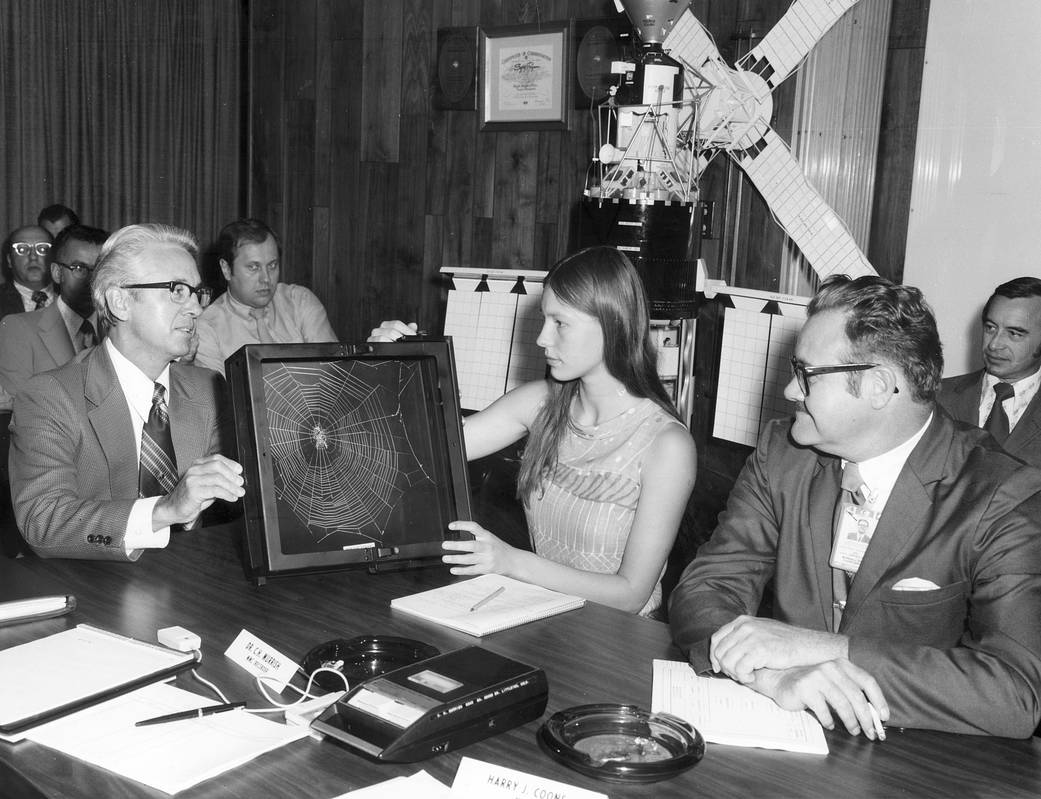Shown in this 1972 image is Lexington, Massachusetts, high school student Judith Miles, who discusses her proposed Skylab experiment with Keith Demorest (right) and Henry Floyd, both of Marshall Space Flight Center (MSFC). In her experiment, called “Web Formation in Zero Gravity,” spiders were released into a box and their actions recorded to determine how well they adapted to the absence of gravity.
The experiment flew aboard the Skylab 3 mission and proved that spiders could still spin webs in microgravity.
The experiement was designed to measure motor response, an indication of the functioning of the central nervous system. Drugs such as stimulants and sedatives affect the nervous system by causing degradation of certain motor responses. In an effort to study the effects of drugs, researchers have often utilized spiders as test subjects. The geometrical structure of the web of an orb-weaving spider provides a good measure of the condition of its central nervous system.
After reading an article in the National Geographic magazine describing the behavior of the spider, Miles suggested a study of the spider’s behavior while weightless. Since the spider senses its own weight to determine the required thickness of web material and uses both the wind and gravity to initiate construction of its web, the lack of gravitational force in Skylab would provide a new and different stimulus to the spider’s behavioral response.+ Read more about student experiements aboard Skylab.Image credit: NASA
2 min read





























